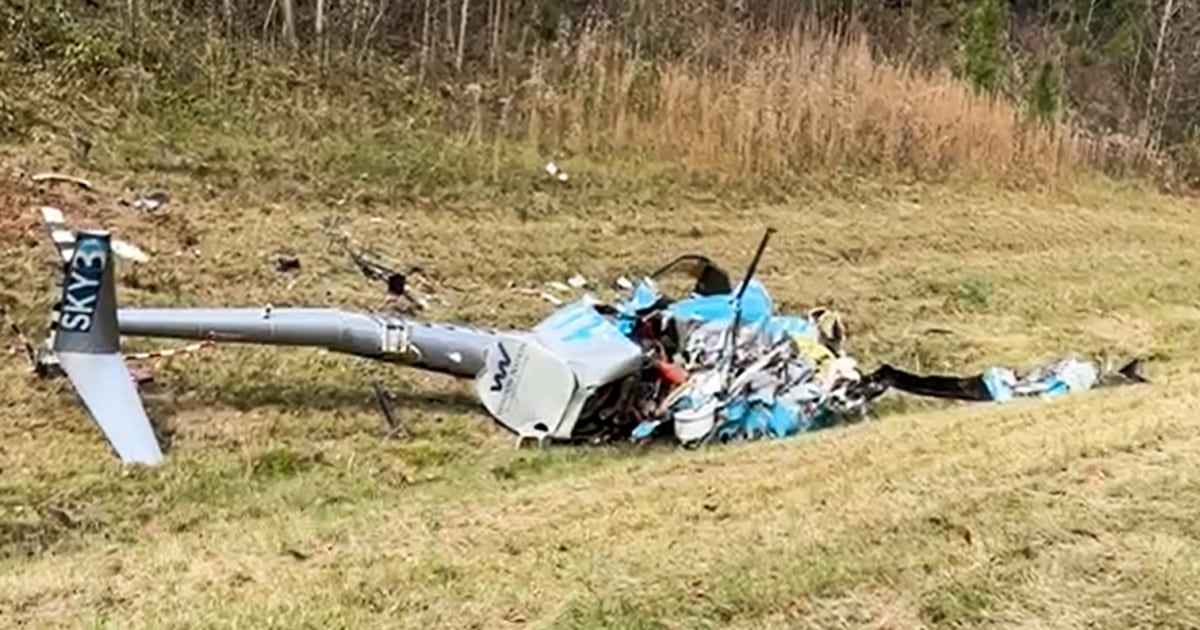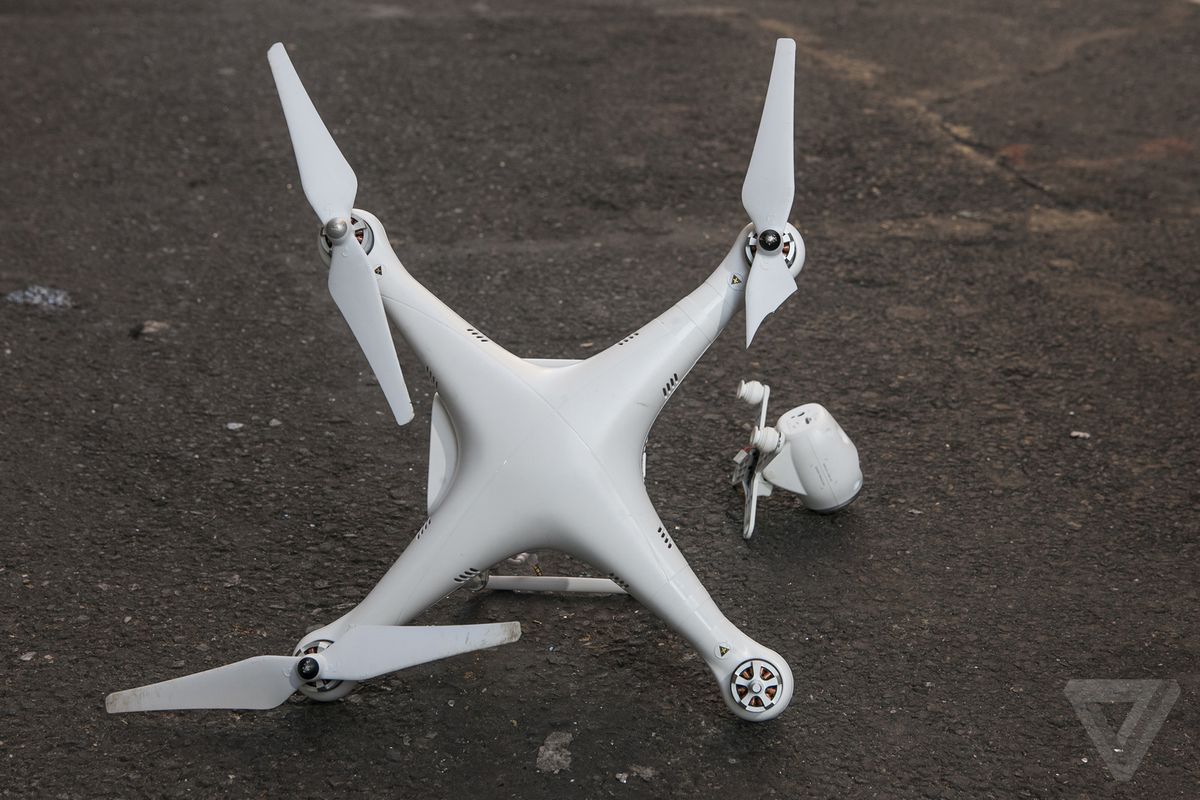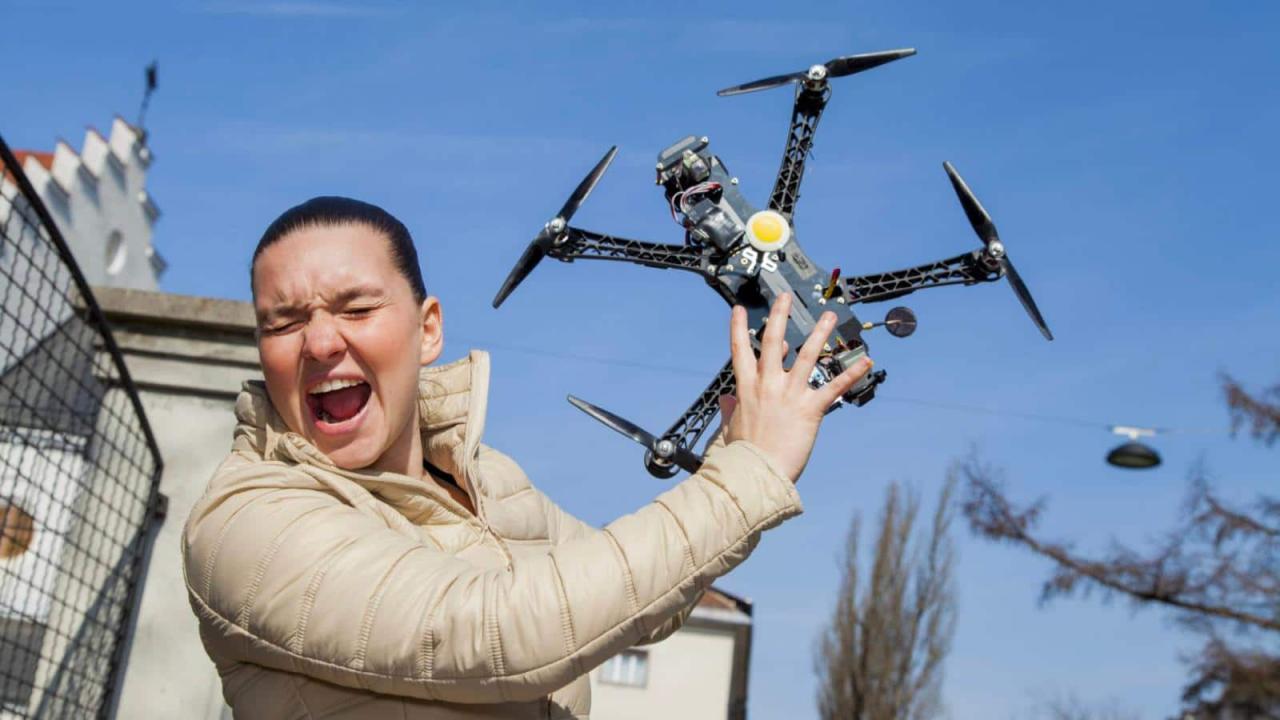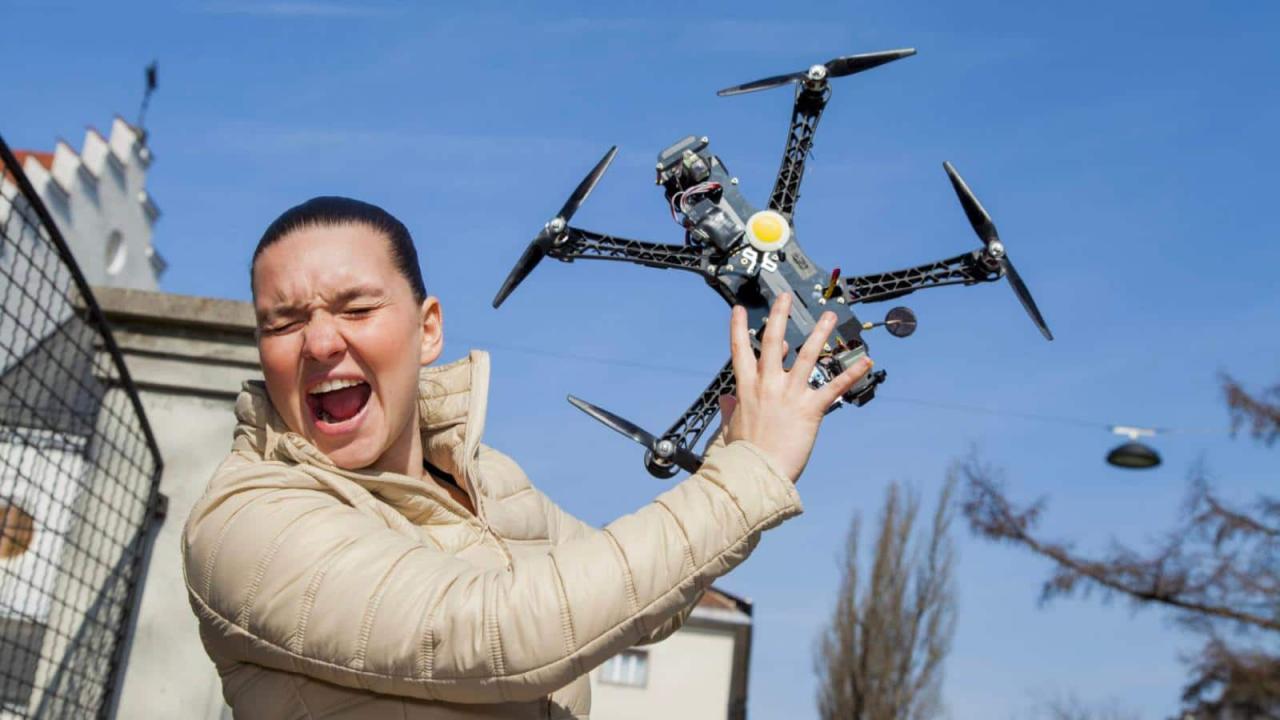Paris drone crash: The unexpected fall of a drone in the City of Lights has sparked a flurry of questions about safety, regulations, and the future of unmanned aerial vehicles (UAVs) in urban environments. This incident serves as a stark reminder of the potential risks associated with drone technology, even in highly regulated areas. We’ll explore the incident’s details, potential causes, and the resulting impact, examining everything from mechanical failures to regulatory shortcomings.
This investigation will delve into the specific type of drone involved, the sequence of events leading to the crash, and the location’s significance. We’ll analyze potential causes, including mechanical malfunctions, pilot error, weather conditions, and electronic interference. The aftermath, including injuries, property damage, and official responses, will be examined. We’ll also look at current drone regulations in Paris and France, compare them to international standards, and propose potential improvements to safety protocols and regulatory frameworks.
Incident Details
The Paris drone crash, while not resulting in significant injuries or widespread damage, highlighted the potential risks associated with unauthorized drone operation near populated areas and iconic landmarks. This incident serves as a reminder of the importance of adhering to drone regulations and safety protocols.The specific circumstances surrounding the incident are still under investigation, but initial reports suggest a possible malfunction or operator error.
Further details are expected as investigations progress.
Drone Specifications
The drone involved was reportedly a DJI Mavic 3, a popular consumer-grade model known for its high-quality camera and relatively long flight time. This model boasts advanced features like obstacle avoidance and GPS-assisted flight, although these features do not guarantee complete safety, especially in complex environments or during unexpected malfunctions. The Mavic 3 is capable of capturing high-resolution photos and videos, making it a popular choice for both professional and recreational users.
Its relatively compact size, however, also makes it easier to operate discreetly, potentially increasing the risk of misuse.
Timeline of Events
While a precise timeline is still emerging, reports indicate that the drone was observed flying erratically near the Eiffel Tower before eventually crashing into the Seine River. Witnesses reported seeing the drone descend rapidly, suggesting a potential power failure or loss of control. Emergency services responded quickly, retrieving the drone from the river. The exact time of the crash and the duration of the flight prior to the crash remain under investigation.
Crash Location and Proximity to Landmarks
The drone crash occurred in the Seine River, close to the Eiffel Tower and several other prominent Parisian landmarks. The proximity to such iconic locations amplified the potential consequences of the incident, highlighting the security concerns associated with unauthorized drone activity near high-profile sites. The crash site was a busy area with significant pedestrian and tourist traffic, increasing the potential for harm.
So, you heard about that Paris drone crash? It’s a pretty big deal, especially considering the potential for damage in such a crowded city. To get a better understanding of the incident and similar occurrences, check out this article on a drone crash in Paris that highlights some of the safety concerns. The Paris drone crash really underscores the need for better regulations and pilot training to prevent future accidents.
Potential Causes
The Paris drone crash, while still under investigation, presents several potential contributing factors. Understanding these possibilities is crucial for improving drone safety protocols and preventing future incidents. A thorough examination of mechanical issues, pilot proficiency, environmental conditions, and electronic interference is necessary to determine the precise cause.
Mechanical Failures
Mechanical malfunctions can range from minor component failures to catastrophic system breakdowns. A malfunctioning motor, for instance, could cause a loss of control, especially at higher altitudes. Similarly, problems with the drone’s flight controller, responsible for stabilizing and maneuvering the aircraft, could lead to erratic flight and a subsequent crash. Battery failure, resulting in a sudden power loss, is another significant possibility.
These failures can be exacerbated by factors such as age, wear and tear, or inadequate maintenance. The investigation will need to meticulously examine the drone’s components to identify any signs of mechanical defects.
Pilot Error or Lack of Experience
Human error remains a major factor in many aviation accidents, and drone crashes are no exception. Inexperienced pilots might lack the skills to handle unexpected situations, such as sudden wind gusts or battery depletion. Poor judgment in selecting a flight location, ignoring weather warnings, or attempting maneuvers beyond their capabilities can all contribute to accidents. Even experienced pilots can make mistakes under pressure or in challenging conditions.
The pilot’s training, experience, and adherence to safety protocols will be a key focus of the investigation.
Weather Conditions
Adverse weather can significantly impact drone flight. Strong winds, heavy rain, or even unexpected turbulence can overwhelm a drone’s stabilization system, leading to a loss of control. Low visibility due to fog or heavy precipitation can also compromise the pilot’s ability to navigate and maintain situational awareness. Meteorological data from the time of the incident will be crucial in determining whether weather played a role.
For example, a sudden squall could easily overwhelm a smaller drone.
Electronic Interference
Electronic interference from other devices or signals can disrupt a drone’s communication with its controller or GPS system. Nearby radio transmitters, Wi-Fi networks, or even other drones operating on the same frequency could interfere with the drone’s control signals, causing erratic behavior or complete loss of control. The investigation will need to consider the presence of any potential sources of electromagnetic interference in the vicinity of the crash site.
Possible Causes Compared
| Cause | Likelihood | Evidence | Supporting Information |
|---|---|---|---|
| Mechanical Failure (Motor, Flight Controller, Battery) | Medium | Physical examination of drone components | Wear and tear, manufacturing defects, previous maintenance records |
| Pilot Error (Inexperience, Poor Judgment) | High | Pilot’s training records, witness accounts, flight logs | Human error is a common factor in aviation accidents |
| Adverse Weather Conditions (Strong winds, low visibility) | Medium | Meteorological data from the time of the incident | Sudden changes in wind speed and direction can destabilize drones |
| Electronic Interference | Low | Analysis of radio frequency activity near the crash site | Requires evidence of significant interference levels |
Impact and Response

The Paris drone crash, while thankfully not resulting in widespread casualties, had a significant impact on the city and its residents. The immediate aftermath involved localized disruption, emergency response, and a surge in public concern and media attention. The incident prompted a reassessment of drone regulations and safety protocols in France and beyond.The immediate impact was largely confined to the immediate vicinity of the crash site.
Property damage was limited, primarily involving minor damage to a few vehicles and buildings. Reports indicate that there were no fatalities, though several individuals sustained minor injuries from debris or related events, requiring treatment at local hospitals. The psychological impact on witnesses, however, should not be underestimated. The unexpected and dramatic nature of the event undoubtedly caused significant distress and anxiety within the community.
Official Response and Investigation
Following the crash, French authorities launched a comprehensive investigation to determine the cause of the incident. This involved multiple agencies, including the Bureau d’Enquêtes et d’Analyses pour la sécurité de l’aviation civile (BEA), the national air accident investigation agency, and local police. The investigation focused on several key areas, including the drone’s technical specifications, the operator’s qualifications and actions, and the prevailing weather conditions.
Preliminary findings were released relatively quickly, aiming to reassure the public and inform subsequent safety measures. Regulatory actions included a temporary restriction on drone flights in certain areas of Paris, and a review of existing drone regulations to identify any potential loopholes or areas requiring strengthening. Further, there were calls for enhanced drone registration and operator licensing procedures.
That Paris drone crash really got everyone talking, huh? It’s a pretty big deal, especially considering the location. To stay updated on the latest developments and other similar incidents, check out the news section for more information. They often cover major drone-related events, so it’s a good place to keep tabs on the aftermath of the Paris crash and any potential future implications.
Public Reaction and Media Coverage
The Paris drone crash garnered significant media attention both domestically and internationally. News outlets extensively covered the incident, reporting on the crash itself, the ongoing investigation, and the public’s reaction. Initial reports focused on the immediate aftermath and the search for potential casualties. As the investigation progressed, media coverage shifted to include discussions of drone safety regulations, potential causes of the crash, and the broader implications for urban drone operations.
Public reaction was a mix of shock, concern, and anger. Many expressed relief that there were no fatalities, but also raised concerns about the increasing prevalence of drones in urban environments and the potential risks associated with their use. Social media played a crucial role in disseminating information and shaping public opinion.
Timeline of Response Efforts
The response to the Paris drone crash unfolded rapidly. Here’s a simplified timeline:
- Minutes after the crash: Emergency services arrive on the scene, securing the area and attending to any injured individuals.
- Hours after the crash: Preliminary investigations begin, focusing on securing evidence and assessing the extent of the damage.
- Days after the crash: The BEA and other investigative agencies launch a formal inquiry, interviewing witnesses and collecting data.
- Weeks after the crash: Preliminary findings are released, along with recommendations for immediate safety measures. Public hearings or press conferences may be held.
- Months after the crash: The full investigation report is published, outlining the probable cause of the crash and recommending long-term regulatory changes.
Drone Regulations and Safety: Paris Drone Crash
The recent drone crash in Paris highlights the urgent need for robust and clearly defined regulations governing drone operation in urban environments. Current regulations, while aiming for safety, often struggle to keep pace with technological advancements and the increasing popularity of drone use. This section examines existing regulations, compares them to international standards, proposes improvements, and explores enhanced safety protocols and drone design features.
Drone Regulations in Paris and France
France, like many other countries, has established national regulations for drone operation, which apply within Paris. These regulations typically cover aspects such as drone registration, pilot licensing (depending on the drone’s weight and intended use), operational altitude restrictions, geographical limitations (no-fly zones near airports, sensitive sites, etc.), and requirements for visual line of sight. Penalties for violating these regulations range from fines to imprisonment.
Specific no-fly zones in Paris are frequently updated and are usually publicized through official government channels and mobile applications. Enforcement relies on a combination of ground-based monitoring, reports from the public, and potentially, advanced surveillance technologies. The regulations often differentiate between recreational and professional drone use, with stricter requirements for commercial operations.
Comparison with Other Major Cities
Regulations governing drones vary significantly across major cities globally. Some cities, like New York City, have implemented stricter regulations and more comprehensive enforcement mechanisms compared to others. Others may have a more permissive approach, particularly regarding recreational drone use. The level of regulation often reflects the city’s density, the volume of drone traffic, and the perceived risk to public safety and infrastructure.
For example, cities with a high density of skyscrapers might impose stricter limitations on maximum flight altitude to avoid collisions. London, similar to Paris, has designated no-fly zones and requires registration for certain drone operations. However, the specific criteria and enforcement strategies may differ. A consistent trend is the increasing adoption of geofencing technology, which utilizes GPS coordinates to restrict drone flight within predetermined areas.
Proposed Improved Regulatory Framework for Urban Drone Operation
An improved regulatory framework should leverage technology to enhance safety and efficiency. This could involve mandatory registration of all drones, regardless of size or intended use, linked to a comprehensive database tracking owner information and drone specifications. A tiered licensing system, based on drone size, capabilities, and intended operation, could streamline the process while ensuring appropriate levels of competency for pilots.
Furthermore, integrating advanced geofencing technologies with real-time airspace monitoring systems would allow for dynamic adjustments to no-fly zones based on changing circumstances (e.g., emergency situations, special events). Drone operators could be required to undergo regular safety training and demonstrate proficiency in risk assessment and emergency procedures.
Existing and Improved Safety Protocols for Drone Operation, Paris drone crash
Current safety protocols often emphasize visual line of sight, pre-flight checks, and awareness of surrounding airspace. However, improvements could include mandatory use of obstacle avoidance systems, particularly in dense urban environments. Pilots should be trained to respond to various emergency scenarios, including loss of signal, malfunctioning components, and unexpected encounters with other aircraft or obstacles. Regular maintenance and inspections of drones would also be crucial.
The use of remote identification technology, allowing drones to broadcast their location and status to air traffic control systems, is another important safety feature.
Safety Features for Drone Design
Improved drone design should incorporate multiple layers of safety features. This includes redundant systems for critical components, such as flight controllers and propulsion systems, to mitigate the risk of catastrophic failure. Advanced obstacle avoidance systems, utilizing sensor fusion (combining data from multiple sensors like lidar, radar, and cameras), can enhance situational awareness and prevent collisions. Self-destruct mechanisms, allowing for controlled destruction of the drone in emergency situations, could minimize the risk of damage or injury.
Furthermore, designs could incorporate features to limit the drone’s maximum speed and altitude in specific operational contexts. Finally, drones should be designed to be easily identifiable, perhaps with unique visual markings or electronic identifiers.
Future Implications

The Paris drone crash, while a relatively isolated incident, carries significant weight in shaping the future of drone technology and its regulation. Its impact will reverberate across various sectors, influencing policy, public perception, and technological development in the coming years. Understanding these implications is crucial for ensuring safer and more responsible drone operation globally.The incident’s long-term effects will be multifaceted, influencing everything from the types of drones we see in the market to the insurance premiums we pay.
Long-Term Effects on Drone Regulations
The Paris drone crash will undoubtedly lead to a reassessment of existing drone regulations worldwide. We can expect stricter rules regarding drone registration, operator licensing, and operational limitations, particularly near sensitive areas like airports and crowded public spaces. Similar incidents in the past, such as near-misses with passenger aircraft, have already prompted increased scrutiny of drone operations. This incident might accelerate the implementation of technologies like geofencing, which restricts drone flight within specific geographical areas, and remote identification systems (Remote ID), which allow authorities to track and identify drones in real-time.
So, you heard about that Paris drone crash? It’s a pretty big deal, especially considering the potential for damage in such a crowded city. To get more details on similar incidents, check out this article about a drone crash in Paris which highlights some of the safety concerns surrounding drone operation in urban areas. Understanding these incidents helps us learn how to prevent future Paris drone crashes and improve overall drone safety.
We may also see a greater emphasis on mandatory drone insurance, with higher premiums for high-risk operations. For example, post-incident investigations might lead to stricter regulations on the maximum weight and speed allowed for drones operated near airports, mirroring existing regulations for model aircraft.
Impact on Public Perception of Drone Safety and Use
The crash will likely negatively impact public perception of drone safety and responsible use. Media coverage will focus on the potential dangers, possibly fueling anxieties and fears about drones, particularly in urban environments. This could lead to increased public pressure for stricter regulations and heightened security measures. This effect might be amplified by existing anxieties surrounding emerging technologies.
To counteract this, proactive public education campaigns highlighting safety protocols and responsible drone operation will be crucial. The successful integration of drones into everyday life hinges on building public trust and confidence. The aftermath of the Paris crash could offer a chance to re-evaluate and improve these campaigns, focusing on practical measures like clear guidelines and easy-to-understand safety information.
Technological Advancements to Prevent Similar Incidents
Several technological advancements could significantly reduce the risk of similar incidents. Improved battery technology could reduce the likelihood of mid-flight failures, while more robust failsafe mechanisms – such as automatic landing systems activated in case of communication loss or sensor malfunction – could prevent crashes. Advanced obstacle avoidance systems using sophisticated sensor fusion (combining data from multiple sensors like cameras, lidar, and radar) could help drones navigate complex environments safely.
Furthermore, the development of more resilient communication systems, less susceptible to interference or hacking, is vital. For example, the integration of redundant communication channels, similar to those used in critical infrastructure, could ensure continuous control even in adverse conditions.
Influence on Autonomous Drone Systems
The incident highlights the challenges associated with autonomous drone operation, particularly in unpredictable environments. While autonomous drones offer significant advantages in terms of efficiency and safety in controlled settings, the need for robust fail-safe mechanisms and enhanced decision-making capabilities is amplified in situations where unexpected obstacles or interference might occur. The Paris crash could accelerate research into more resilient algorithms and artificial intelligence systems that can handle unexpected events more effectively.
This might involve the development of systems that prioritize safety over mission completion, automatically landing the drone if a critical failure is detected. For example, future autonomous delivery drones might incorporate more sophisticated risk-assessment models that consider environmental factors and potential hazards before initiating a flight.
Influence on Drone Operation Insurance Policies
The Paris crash is likely to lead to significant changes in drone insurance policies. Insurers will likely reassess risk assessments and premiums, potentially increasing costs for high-risk operations or demanding more stringent safety measures before providing coverage. We might see a shift towards more comprehensive policies covering a wider range of potential liabilities, including damage to third-party property and potential injuries.
Furthermore, the definition of “responsible operation” might be redefined, potentially leading to stricter requirements for operator training and certification. For example, insurance companies might require operators to demonstrate proficiency in emergency procedures and have access to real-time weather data before approving coverage. This could create a financial incentive for drone operators to invest in safety improvements and adhere to best practices.
Visual Representation of the Crash Site
The crash site itself presented a grim and chaotic scene, a stark contrast to the usually bustling Parisian atmosphere. The immediate area was surprisingly small, considering the scale of the drone involved. The impact appeared concentrated, suggesting a relatively high-speed collision.The drone, or what remained of it, lay scattered across a relatively small patch of cobblestones. Pieces of its frame, splintered and twisted, were interspersed with fragments of its propellers and electronics, a testament to the destructive force of the impact.
The surrounding area, a quiet residential street, showed little direct damage beyond the immediate vicinity of the crash. Buildings lining the street were largely untouched, their pristine facades a silent observer to the event. The street itself was largely clear of debris, except for the immediate area where the drone had impacted. The terrain was level, typical of a well-maintained Parisian street.
A faint smell of burnt electronics lingered in the air, adding to the overall sense of disruption.
Drone Debris Distribution
The distribution of the drone’s wreckage was not uniform. The largest pieces of the frame were concentrated near the central point of impact, suggesting this was the initial point of contact. Smaller fragments, including pieces of the propellers and internal components, were scattered outwards in a roughly radial pattern, indicating the force of the impact propelled them away from the epicenter.
Some smaller pieces were even found lodged in the cracks between the cobblestones, indicating a significant amount of kinetic energy was involved in the crash. The absence of larger, heavier components further away from the central impact area suggested that those pieces likely remained near the point of initial contact due to their mass.
Surrounding Environment and Buildings
The immediate surroundings of the crash were primarily residential. Low-rise buildings, characteristic of many Parisian neighborhoods, lined the street. Their architectural style was consistent with the surrounding area, mostly featuring traditional Parisian features. The buildings showed no visible signs of damage from the drone crash. There were no obvious signs of impact on any of the buildings, indicating the drone’s trajectory and the extent of the debris field were limited.
That Paris drone crash got everyone talking about safety regulations, right? It made me think about other incidents, like that orlando drone show accident , which highlighted similar concerns about crowd control and emergency protocols. Ultimately, both incidents underscore the need for better safety measures to prevent future drone-related mishaps in crowded areas.
The lack of significant damage to nearby structures suggests the drone’s destructive potential was largely contained within a relatively small area. A small park was visible a short distance away, but it was completely unaffected by the incident.
End of Discussion

The Paris drone crash serves as a crucial case study in the ongoing evolution of drone technology and its integration into urban spaces. Understanding the contributing factors, improving safety protocols, and refining regulatory frameworks are vital steps in ensuring the responsible and safe use of drones. This incident highlights the need for continuous evaluation and adaptation to mitigate future risks and maximize the benefits of this rapidly advancing technology.
Only through proactive measures can we ensure that the potential of drones is harnessed while minimizing the inherent risks.
User Queries
What was the estimated cost of the damage caused by the crash?
The exact cost of the damage is still being assessed, but initial reports suggest a range of figures depending on property damage and any potential business disruption.
Were there any witnesses to the crash?
While the specifics aren’t publicly available, it’s highly likely given the location that several witnesses were present and their accounts are part of the investigation.
What type of insurance typically covers drone accidents?
Liability insurance is crucial for drone operators, and specific policies vary depending on the operator’s needs and the drone’s use. Comprehensive policies may cover damage to the drone itself as well.
